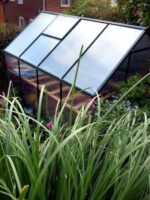For many years, the Edwardian English cottage garden has maintained a high level of dignity throughout our changing landscape and social values.
A lost vision of a rural past
The dreamy image of a ‘slightly unruly’ ramble of herbaceous perennials, colourful annuals and scented gems has captured the imagination of so many gardeners in the UK and around the world. It is the outward expression of a deep longing to return to a better and idyllic time before the concrete revolution, before our front gardens became shrines to our blessed cars and small villages were bulldozed to make way for ‘homes in the park’ – council built estates.
However, the sad reality is that the cottage garden very rarely existed during the Edwardian period. At that time in British history, rural life was extremely hard and brutal; underpinned with abject poverty and exploitation of the working classes. Our picture-card view of rose smothered cottages and winding flowered lined paths was little more than a fabrication of poets and artists.
Hope in troubled times?
Clearly, there is a need in all of us to dream of such a utopian lifestyle surrounded by a semi-controlled natural world. Although our newspapers are full of doom and gloom as the recession bites and western social cohesion shows signs of weakening, the truth is (relatively speaking) we live in very fortunate times. Many of us are fortunate enough to own our houses (and gardens of course), we pay lower taxes, earn more than enough to sustain our families and have free health care and social benefits should we really struggle.
There is no reason why we shouldn’t make the most of our gardens and make this the real age of the cottage garden. Just because such a theme is little more than a fantasy, doesn’t mean we should not make it a reality. After all, it was such a lovely vision of those poets and artists and hits at our core human values of what we see as an ideal.


